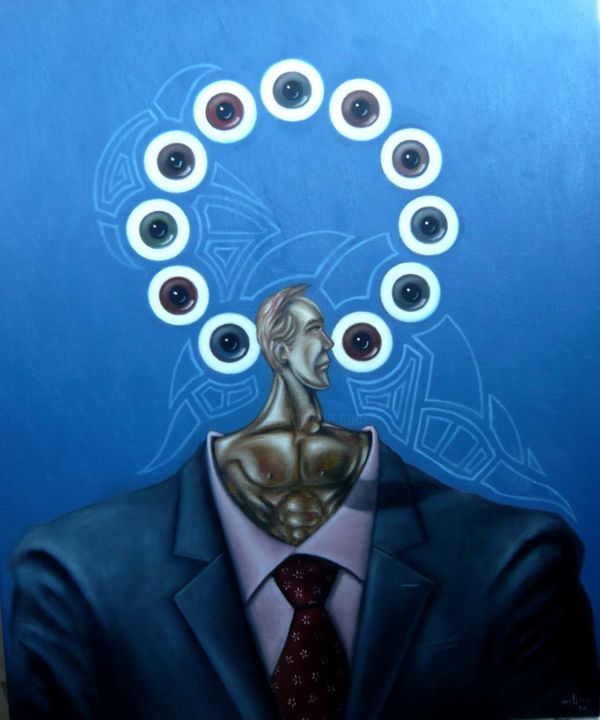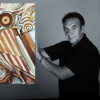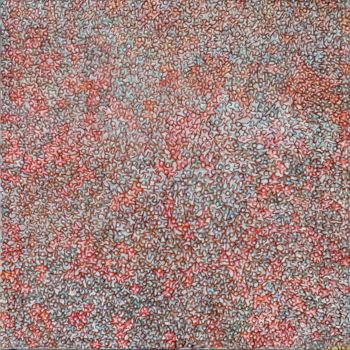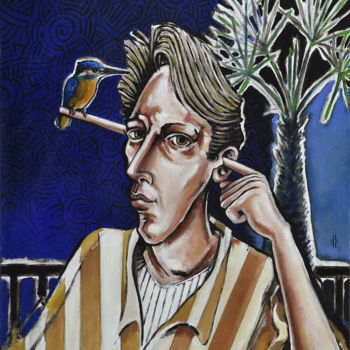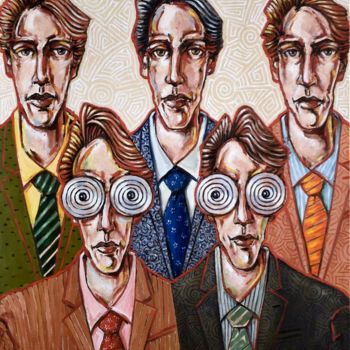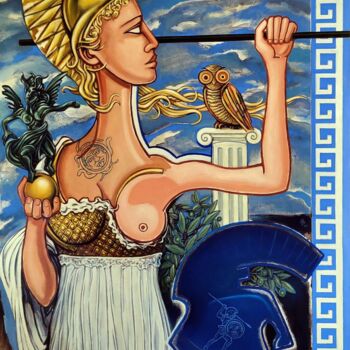Satıcı Pascal Buffard
-
Orijinal sanat (One Of A Kind)
Tablo,
Keten tuval tarihinde
Petrol
- boyutlar Yükseklik 28,7in, Genişlik 23,6in
- Çerçeveleme Bu resim çerçeveli değil
**
L'histoire du drapeau remonte à l'année 1955. À cette époque, l'Union européenne n'existait que sous la forme de la Communauté européenne du charbon et de l'acier et n'était constituée que de six États membres. Cependant, un autre organisme rassemblant un plus grand nombre de membres, le conseil de l'Europe avait été créé plusieurs années auparavant; celui-ci veillait à défendre les droits de l'Homme et à promouvoir la culture européenne.
Le Conseil de l'Europe cherchait un symbole pour le représenter. Après maintes discussions, il a adopté le motif actuel : un cercle de douze étoiles dorées sur fond bleu. Dans différentes traditions, douze est un chiffre symbolique représentant la complétude. Il correspond aussi bien entendu au nombre de mois de l'année et au nombre d'heures sur le cadran d'une montre. Quant au cercle, il est entre autres un symbole d'unité.
Le Conseil de l'Europe a ensuite invité les autres institutions européennes à adopter le même drapeau, et en 1983, le Parlement européen a opté pour cet emblème. Finalement, en 1985, le drapeau a été adopté par tous les chefs d'État et de gouvernement de l'UE comme l'emblème officiel de l'Union, qui à cette époque s'appelait les Communautés européennes.
Depuis le début de l'année 1986, le drapeau sert de symbole à toutes les institutions européennes.
The history of the flag goes back to the year 1955. At that time, the European Union existed only in the form of the European Coal and Steel Community and was made up only of six Member States. However, another organization gathering a greater number of members, the Council of Europet created several years before; this one took care to defend the human rights and to promote the European culture.
The Council of Europe sought a symbol to represent it. After many discussions, it adopted the current reason: a circle of twelve stars gilded on blue bottom. In various traditions, twelve is a figure symbolic system representing the completeness. It corresponds as well heard to the number of months of the year and the number of hours on the face of a watch. As for the circle, it is inter alia a symbol of unit.
The Council of Europe then asked the other European institutions to adopt the same flag, and in 1983, the European Parliament chose this emblem. Finally, in 1985, the flag was adopted by all the heads of state and government of the EU like the official emblem of the Union, which at that time was called the European Communities.
Since the beginning of the year 1986, the flag is used as symbol at all the European institutions.
İlgili temalar
Ressam ve fotoğrafçı Pascal Buffard, 1961'de doğdu. Sanata olan tutkusu onu Paris'teki EMSAT'ta reklamcılık ve görsel iletişim kursları almaya yöneltti ve burada sanatsal alanda temel becerileri kazandı. Şu anda Charenton-le-Pont'ta yaşıyor ve çalışıyor, ancak esas olarak sergilediği anavatanı Charente-Maritime'da.
Sanatsal çalışmaları güncel meseleleri eleştirel bir gözle ele alıyor, bazen de sert bir mizahla renkleniyor. Aşırı nüfus, servet paylaşımı, realite şovları ve dezenformasyon gibi temaları “Saygılar” dizisiyle araştırıyor. Eserlerindeki iri gözler aslında kameraları simgeliyor; görme ve görülme kavramının yanı sıra modern toplumumuzu karakterize eden gözetleme ve röntgencilik konularını da vurguluyor.
Pascal, soyutlamaları için solvent giderme tekniğini kullanarak yağda çalışmayı tercih ediyor. Portföyünde ödüller kazandığı ve medyanın ilgisini çektiği hem kişisel hem de grup halinde çok sayıda sergi yer alıyor. Eserleri çok sayıda özel koleksiyonun yanı sıra özel ve kamuya ait kurumsal koleksiyonlarda da yer almaktadır. Sanatsal bağlılığı, onun dünya vizyonunu ifade etmesine ve yaratımları üzerinde düşünenleri düşünmeye teşvik etmesine olanak tanıyor.
-
Milliyet:
FRANSA

- Doğum tarihi : 1961
- Sanatsal alanlar:
- Gruplar: Çağdaş Fransız Sanatçılar

